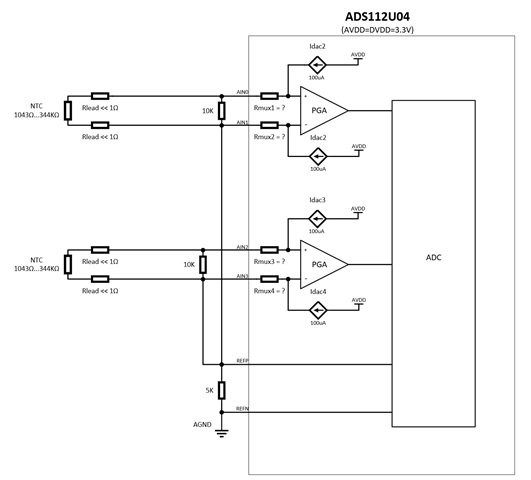Other Parts Discussed in Thread: ADS122U04,
Hello to the community,
There is a need to read temperature from two off-board NTCs (eg. Vishay NTCALUG01T) using a dual-channel ADC with a single UART processor interface. Unfortunately, all these requirements are not flexible thus it seems that my only option is ADS112U04 (the 24-bit resolution of ADS122U04 is not needed in my case).
Datasheet and EVM guide for ADS112U04 provide single sensor solutions only, since they reserve one of the 4 available input pins for each IDAC source. However, I think the following solution might be viable as long as the internal MUX series resistances are not hugely unmatched and well below the minimum measured resistance (which is ~950 Ohms at the upper temperature limit). If this is true, then using two IDACs for each sensor will cancel out the respective Rmux pair resistances.
I know that using the same input pin for measurement and excitation is not the optimum solution but I hope it provides adequate accuracy in the case of high-resistance sensors. What do you think? (cchematic attachment follows, where EMI/RFI networks are omitted for clarity).
Do you have a figure for the MUX series resistance (Rmux1-4 in the schematic) and how it is matched between the 4 input channels?


